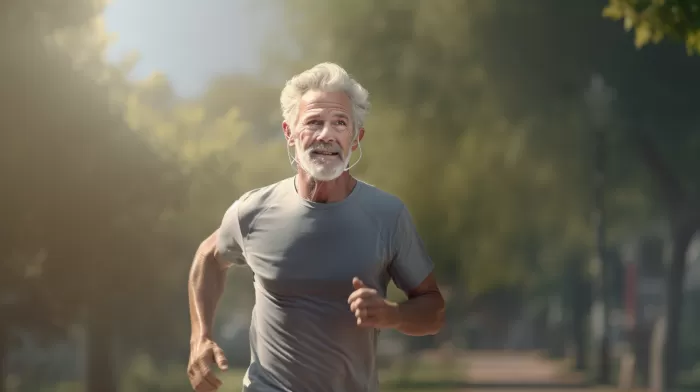Slowing the aging process is no longer considered a fruitless search for a mythical “fountain of youth.” Research has revealed that if there truly is a way to slow the hands of time, it means getting up, moving and getting physical. But don’t worry, you don’t have to exercise till you drop. But you do have to be smart about it. These 7 tips will get you going so you can look and feel younger longer…
Walk 40 minutes three times a week.
Walking helps avoid shrinkage of your hippocampus, once thought natural part of aging. A group of older adults who progressed to this moderate level of walking after a year actually experienced a growth in their hippocampus of 2% where the group that only stretched experienced 1.5% loss. If you’re not exercising currently, begin with 10 or 15 minutes three times a week. Gradually add three minutes a week to each walk to work up to 40. Don’t be tempted to do more on days you feel good. Slow and steady wins.
Strength train three times a week with moderate weights.
Middle-aged men who did so had increased mitochondria, the “powerhouse” of cellular energy production. For even more energy production, combine resistance training and endurance training. Also once an “accepted” part of the aging, researchers believe increasing your mitochondrial function through exercise can slow or reverse the aging process.
To begin a strength-training program it’s best to seek advice of a fitness instructor for proper technique. Start with one set three times a week performing up to 15 repetitions of 8-10 exercises. After two or three weeks of adaptation increase to two sets. In another two or three weeks without complications increase to a third set. Next you’ll increase the weight slightly so that you reduce the repetitions to 10-12.
Make your strength training count.
Normal bone losses occur at a rate of 1-3% a year beginning at about age 35. Post-menopausal women are most prone to bone loss. Those who use a strength training protocol of heavy enough weights to fatigue at 8 or a minimum of 10 repetitions can prevent those losses from occurring.
Lifting lighter weights more repetitions does work bone density pending fatigue is reached. This weight routine can also boost weight loss.
Eat to maintain muscle.
Muscle losses occur at a rate of .8 to 1% a year after the age of 30. Though most Americans believe they eat plenty and take in adequate protein, studies show that self-reports are not accurate and protein intake is insufficient for aging individuals to maintain muscle. The exercising adult that thinks they are compensating for losses with strength training can be accelerating losses without sufficient protein intake. Research suggests that 30gms of protein three times a day is optimal for muscle protein synthesis. High quality proteins like lean meat, fish, and dairy are best. Start by reading labels and planning carefully.
Eat early like a king and late like a pauper.
Studies in the Obesity Journal showed those who ate the majority of their calories early in the day and ate lighter at lunch and lightest at dinner lost more weight than those who saved the largest meal for late in the day. When and how much you eat also impacts your metabolism and reduces your risk for heart attack and stroke.
Continue to consume adequate amounts of calcium, not just for your bones, but for weight control.
Studies show that 1200mg of calcium after the age of 50, along with 400 IU of Vitamin D can help with belly fat loss. Drinking milk is one of the easiest ways of accomplishing this and if you don’t tolerate dairy, alternatives like almond and coconut milk offer even higher amounts of calcium per serving. Consult your physician about a supplement if you don’t do either but food sources are usually best. To help direct calcium to your bones and not to your heart where it can become coronary artery calcium, don’t forget to get your vitamin K2.
Get plenty of sleep.
Too little sleep could make you 30% more likely to be fat. Those who get between seven and nine hours of sleep are less likely to become obese than those with less than six hours a day. The amount of sleep time appeared a bigger weight determinant than genetics.
Avoid extended afternoon naps and late day caffeine. Both can reduce quality of nighttime sleep. Try to get plenty of sunlight and fresh air during the day. A warm bath or shower two to three hours before bed can prepare your body for sleep as your body temperature comes back down. Keep the room cool. Most of all establish a routine with same time to bed and to rise.



